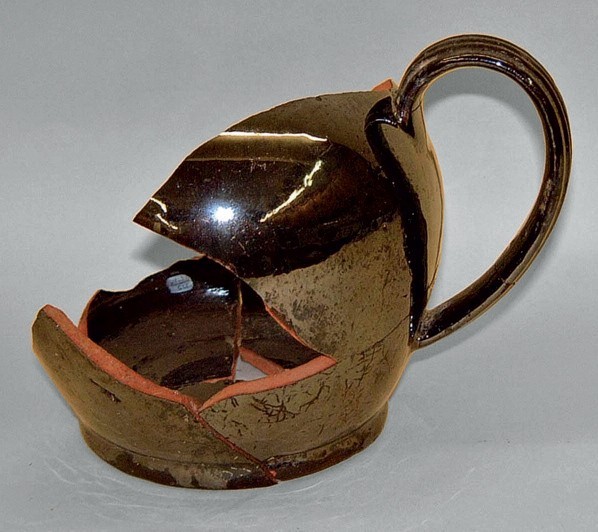
Teapot, possibly Huntington Pottery, Huntington, New York, ca. 1820–1840. Lead-glazed earthenware. H. 5 1/4", D. of base 4". (Courtesy, Greenlawn-Centerport Historical Association; all photos, Robert S. Kissam.) The major difference between this example, found at the Suydam Homestead site, and the Thomas Crafts teapot illustrated in figs. 5 and 6 is the flat bottom.

Base of the teapot illustrated in fig. 1.

Teapot, possibly Huntington Pottery, Huntington, New York, ca. 1820–1840. Lead-glazed earthenware. H. 5 1/2", D. of base 3 1/2". (Courtesy, Greenlawn-Centerport Historical Association.) Although somewhat similar in appearance to the Crafts pot, the manganese-enriched lead glaze on the Suydam pots has a slightly glossier metallic shine.
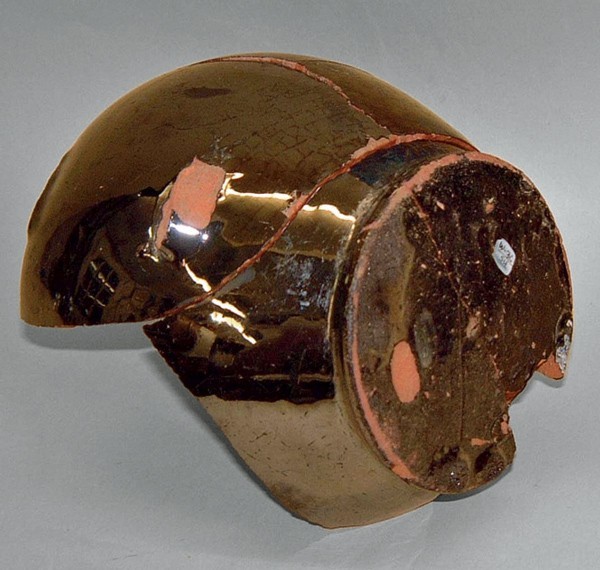
Base of the teapot illustrated in fig. 3.
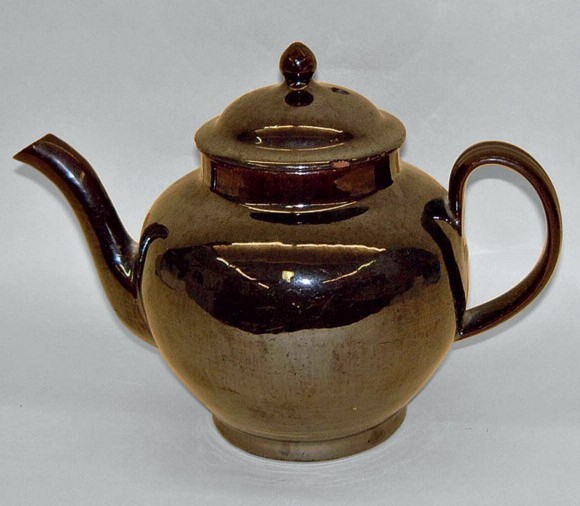
Teapot, Thomas Crafts, Whately, Massachusetts, ca. 1820–1840. Lead-glazed earthenware. H. 7". (Collection of Anthony W. Butera Jr.)
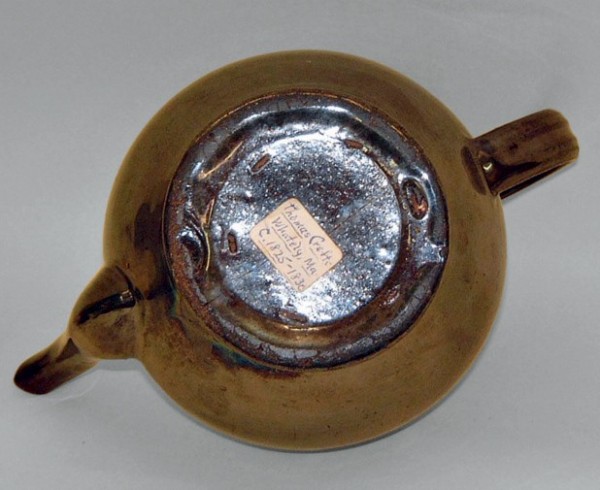
Base of the teapot illustrated in fig. 5. Note the cutout bottom.

Extruded handle sherds, possibly Huntington Pottery, Huntington, New York, ca. 1820–1840. Lead-glazed earthenware. L. of longest 2 1/2". (Courtesy, Greenlawn-Centerport Historical Association.) These sherds were found at the Suydam Homestead site.
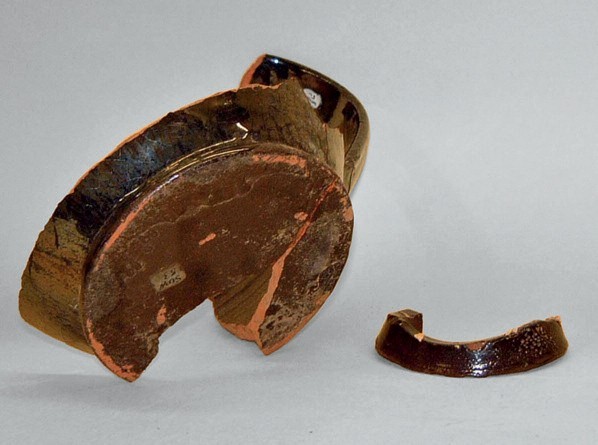
Teapot base, possibly Huntington, New York, ca. 1820–1840, with a setting ring from the Huntington Pottery. Lead-glazed earthenware. Base D. 3 3/4". The discovery of a setting ring for firing flat-bottomed pots at the Huntington Pottery site suggests the source of the Suydam teapots. (Courtesy, Greenlawn-Centerport Historical Association.)
